Step two: Brand Recognition
There’s an old saying that goes something like this: “doing business without marketing is like winking in the dark - you may know you’re doing it, but nobody else does.”
That analogy is equally applicable to brand development (both employee and customer focused). It’s one thing to have built a solid foundation as we lay out in Step One of our Seven Step Process to Brand Engagement, but it’s another critical step to ensure that this is clearly, consistently and creatively communicated to externally to customers and internally to employees.
This step is where Marketing, HR and Learning and Development departments need to come together to cooperate and implement clear strategies.
Brand stewardship is no longer the remit of marketing alone. Savvy companies know that brand needs to be actively managed, communicated, educated and advocated, and that this involves not only multiple departments, but also the buy-in and advocacy of the board and management.
So where to start, once you have a clear idea of what your brand should be in the minds of your customers and employees...
The first step is to know your target market.
When you have a clear idea of exactly who you are talking to you will be able to create campaigns that put your brand in front of them in a meaningful way. This is something that marketers have been doing for hundreds of years, but the rise of Employer Branding has meant that HR and related departments like Learning & Development or Culture must be integrally involved in developing brand programs.
The next part of the process is to craft campaigns which are meaningful, encourage engagement and are clear about the brand.
CASE STUDY: Accenture
© Image copyright Accenture
“Accenture's purpose is to deliver on the promise of technology and human ingenuity and our commitment to our people, clients and communities is to accelerate equality for all.” (Accenture)
One of the leading Global consulting firms, Accenture has aligned messages internally and externally, which enhance the brand and create brand engagement. Importantly, they make employees very clear on the company and brand they are representing.
External:
“Let there be change” embodies their promise to deliver technology and innovation for positive change. The ultimate delivery of this promise relies on their people - hiring, nurturing and retaining excellent talent with great skills and ideas.
Internally:
Whether it’s encouraging people to tell their stories via the “Story Hunters” Program or making sure that each employee is valued for their contribution in the global #InclusionStartsWithI Campaign, employees are left with no doubt that they have a voice and impact, and a contribution to the brand promise.
The #InclusionStartsWithI Campaign was covered in both Diversity & Forbes magazines, enhancing the company’s reputation with customers and future as well. A great example of how the whole becomes greater than the sum of it’s parts.
Of course having a great creative campaign idea is nothing without it being seen and understood by your target markets. Consumer marketing efforts will encompass everything from your website to advertising to social media, in-store experience and all those other “Moments of Truth” we spoke about in our last article.
Similarly communicating and sharing these brand campaigns and programs with staff relies on being present in their place of work, their workspaces (eg screensavers, intranets) and increasingly on social media.
CASE STUDY: Salesforce
© Image copyright Salesforce
Consistently at the top of “best places to work” lists like Fortune’s, as well as being rated “World’s Most Innovative Company” eight times by Forbes, Salesforce as a 20 year old company has evolved rapidly from salesforce automation into a multi-faceted CRM platform and offerings. This expansion left customers and employees alike confused about what the company actually did.
In 2019 they undertook a massive research project to understand what the brand meant to people, culminating in their platform “We Bring Companies and Customers together”
They are also overt about communicating their brand values internally and externally, which many companies don’t do. Their pillars of Trust, Customer Success, Innovation and Equality are at the heart of their communications, product offerings and initiatives.
External:
To their customers they communicate how they help build bridges between them and their customers - putting Customer Success front and centre.
Their digital conference Connections leverages this connection and trust message (and this year’s, perhaps deliberately, features a performance by Grammy Winner Leon Bridges).
Internal:
The concept of “togetherness” is a key pillar of their employee programs, such as B-Well Together - originally an employee wellbeing program which was opened up to the public.
On the Life section of their LinkedIn page, aimed at attracting new talent, you get a very clear idea of what the company stands for, it’s values and what it would be like to work there. With over 2m followers of the page Salesforce is leveraging this platform for both customers and employees (future and current).
From these different elements, you can see how the commonalities are there irrespective of the audience - looking through different lenses you still get a very clear and consistent idea of the Salesforce brand by clear messaging design.
What’s Next?
We will be talking about Step Three: Engagement. Here we will be building on the foundations and programs we have created to date, in order to start a more emotional relationship with our customers and employees.



